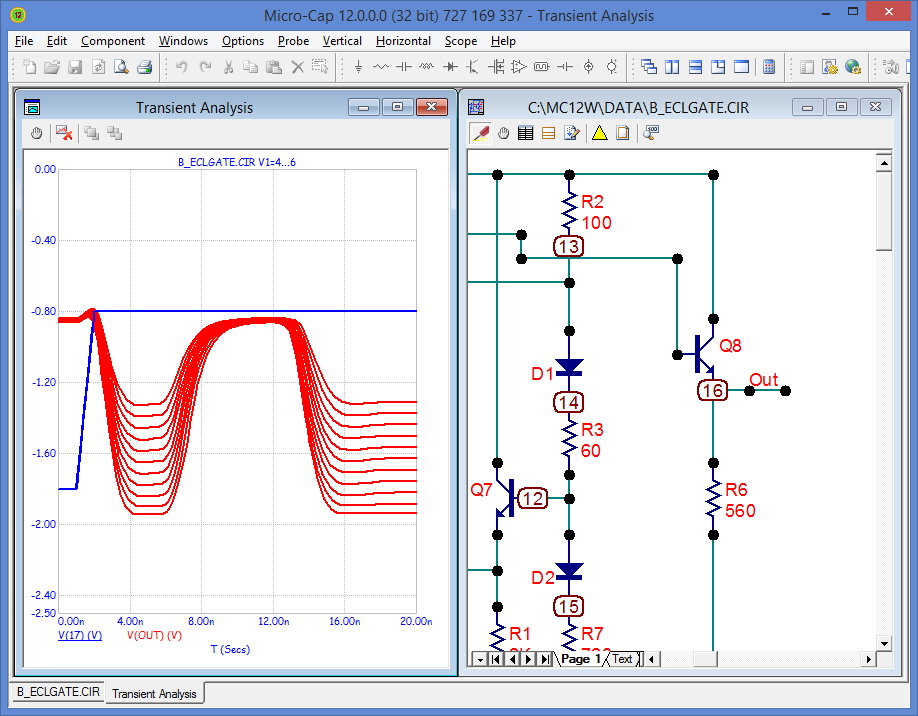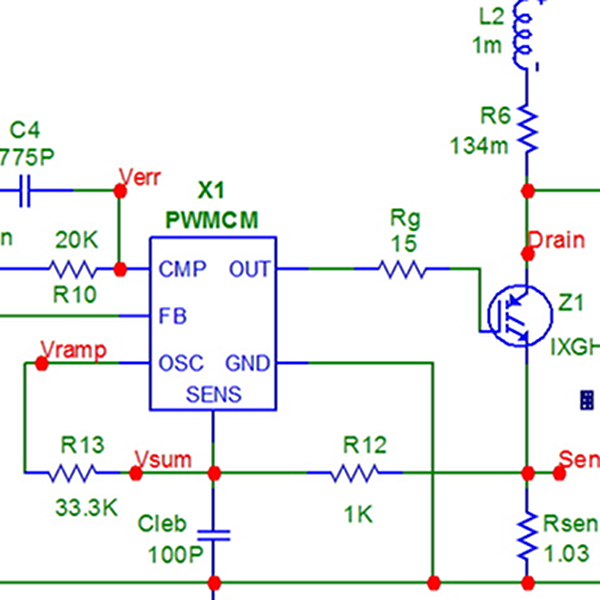Forrest Cook
XCircuit is a design tool that allows you to create electric circuit models and takes advantage of the PostScript language in order to save the files for publishing. It is a useful tool for the. Shareware Junction periodically updates pricing and software information of XCircuit v.3.8.3 full version from the publisher using pad file and submit from users. Software piracy is theft, Using crack, password, serial numbers, registration codes, key generators, cd key, hacks is illegal and prevent future development of XCircuit v.3.8.3 Edition.
Xcircuitis a powerful open source schematic capture program written byTimothy Edwards at Johns Hopkins University.The program has most of the features of a general purpose drawing package andincludes a symbol library facility that can be used to store user defined schematic symbols.Schematics, flow charts, chemical diagrams, and even musical scores may becreated with xcircuit by loading the freely available symbol libraries.There are even libraries of vacuum tube symbols for technical historiansand ham radio enthusiasts.A mathematical symbol typesetting capability is included in the program.Xcircuit uses the PostScript language for its output and library files.The PostScript created by Xcircuit is human readable which makes manualediting possible.Xcircuit is distributed under theArtistic License.
Installation
 Installation of xcircuit may be accomplished by way of eithersource code or an RPM package.
Installation of xcircuit may be accomplished by way of eithersource code or an RPM package.For RPM systems, simplydownload the RPMversion of xcircuit, become root, and install the package as follows:
For source code installations, download the .bz2 file and do the followingas a regular user:
Edit the Imakefile and uncomment the line:Again, as a regular user, compile the code as follows:
Now become root and run:and finally, as a regular user:There are several versions of xcircuit available on the xcircuit homepage.The beta version of the program functions but tends to be a bit unstable.I recommend starting with the more stable alpha 11 version just to get afeel for the program.Beware that schematics created with the new versionmay not be backwards compatible with the old version.
Entering a Schematic
To begin, you should read theXcircuit tutorialand work through all of the examples.The tutorial is easy to follow and will quickly get youup to speed entering schematics.As with most documentation, the tutorial is a bit out of date.The tutorial is based around an older version of the program, but all ofthe example exercises seem to work.The xcircuit home page has a down-loadable version of the tutorial,so you don't need to be online to run the tutorial.The drawing conventions used for making electronic schematics vary fromregion to region.Xcircuit can easily support different styles with the use of customparts libraries.A fairly conventional U.S. schematic style is used in this article.
A quick summary of the steps involved in making a schematic are:
- Pull the various parts you need from the parts libraries
- Arrange the parts to where you want them on the page
- Draw connecting wire lines between the parts
- Place dots on the wire intersections
- Enter text describing the part numbers, values, and other documentation
- Save the file in PostScript format and print it out.
 I use the old classic image viewing program XV 3.10a to convert xcircuitschematics to gif and jpeg files for inclusion in web pages.Run xcircuit and zoom the image to the desired scale, turn off thegrid and axes, do an image grab from xv, and save the image in yourfavorite format.XV isn't truly free software, any image manipulation tool with anequivalent 'grab' function will also work.Another method of turning an arbitrary image on the screen intoan image file is to use the programs xwd and convert:When xwd turns the cursor into a '+' symbol, click on the xcircuit window.Xwd is part of the XFree86 package and convert is part of the ImageMagickpackage.
I use the old classic image viewing program XV 3.10a to convert xcircuitschematics to gif and jpeg files for inclusion in web pages.Run xcircuit and zoom the image to the desired scale, turn off thegrid and axes, do an image grab from xv, and save the image in yourfavorite format.XV isn't truly free software, any image manipulation tool with anequivalent 'grab' function will also work.Another method of turning an arbitrary image on the screen intoan image file is to use the programs xwd and convert:When xwd turns the cursor into a '+' symbol, click on the xcircuit window.Xwd is part of the XFree86 package and convert is part of the ImageMagickpackage.The user interface on xcircuit has been well thought out for efficiencyof use.Making wire connections is probably the single most commonstep to entering a schematic, and the program is set up so that themouse is normally in wire entry mode.Pulling parts symbols from thelibraries is another common task, the parts libraries are just aclick of the 'L' key away.Once you are up to speed on the basic operations,high quality schematics can be produced very rapidly.
Creating Custom Parts Libraries
 Xcircuit's ability to create custom parts libraries is probablyits most powerful feature since it allows the user to tailor theprogram to their own needs.The tutorial should be followed to learn how to create and manipulateparts libraries.The parts libraries are just ASCII postscript files,it is possible to edit the libraries with your favorite text editor.Be sure to save an unmodified copy of the library before hacking on it.The general purpose nature of the program allows any kind of custom symbolsto be created.The musical composition on the xcircuit home page is a goodexample of the flexibility of the program.The program has a tendency to crash when working on custom parts librarieson RedHat 6.X systems, save often.
Xcircuit's ability to create custom parts libraries is probablyits most powerful feature since it allows the user to tailor theprogram to their own needs.The tutorial should be followed to learn how to create and manipulateparts libraries.The parts libraries are just ASCII postscript files,it is possible to edit the libraries with your favorite text editor.Be sure to save an unmodified copy of the library before hacking on it.The general purpose nature of the program allows any kind of custom symbolsto be created.The musical composition on the xcircuit home page is a goodexample of the flexibility of the program.The program has a tendency to crash when working on custom parts librarieson RedHat 6.X systems, save often.Development and Improvements
The newer beta version of xcircuit includes a feature calledschematic capture, this adds another level of information on top ofthe schematic that allows for circuit simulation with tools such as spice.Netlists, which describe lists of parts with common connections,can be created in schematic capture mode and can be used withprinted circuit board tools to assist in the layout of parts.The beta version if xcircuit is indeed very beta, one shouldproceed with caution since it tends to crash easily.
Xcircuit-dev Xcircuit Installation For Mac Download
Conclusion
Xcircuit is a bit rough around the edges at this point in its development,but it has proven itself to be a valuable program.If you design circuits, network diagrams, flow charts, or just need adrawing package with symbol libraries, xcircuit is worth investigating.Xcircuit-dev Xcircuit Installation For Mac 2019
References
- Xcircuit home page
- Xcircuit tutorial page
- XV image viewer
- ImageMagick image manipulation program
- XFree86 window system
- NEXT ARTICLEon using PCB